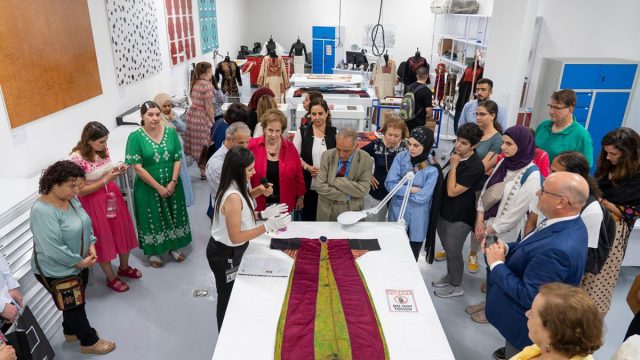Arrived in Nanjing via the bullet train and am staying in the Confucius Temple area with a river view. This sounds all very idyllic until you realize that the Chinese tourist plies this river on lantern adorned boats until 11 at night with the commentary, obviously in Mandarin, coming from both directions, up and down the river.
The Calligraphy and Paintings Mounting and Restoration Studio is based at the Nanjing Museum and this is where I am spending the next four weeks. I arrived and was immediately given a grade 3 landscape in scroll format to work on. Documentation in Chinese was interesting and then came the real work: washing, removal of old linings and replacing the first lining, then lining the silk in preparation for the final mounting. All that in two days.

My day begins at 9.00 am, after a five stop 20p metro ride. All seven of the lacquer tables must be washed to stop the lacquer from cracking and then the mounting work begins. We stop at 11.00 for a two and a half hour lunch break. I cannot eat breakfast and then lunch at this time so have adopted a brunch mentality. Lunch consists of rice, of course, meat or fish and a selection of vegetables all for £1. We resume work at 1.30 and then finish at 5 pm. When I explain my normal working day and having only an hour for lunch they are amazed, but this Chinese schedule must be understood in the context that the scroll mounters only get five days holiday a year!
So to work: making paste is done every two or three days or when needed using Chinese wheatstarch and alum (potassium aluminium sulphate). After mixing with warm water, boiling water is then added and stirred in quickly to form a thick consistency. Boiling water is then put on top and in a metal bowl to continue the cooking process for a few more minutes before it is again stirred in and then cooled.

The painting and media are checked and then the painting is table washed to remove dirt, acid degradation and to aid the flattening process. The backing is then removed prior to the first lining.

The silk is then prepared whilst the lined painting is drying and is then pasted on the wooden wall to also dry.

The painting is then assembled using silk margins and is checked for any cracks or missing areas that might need reinforcing before the final two linings are applied.

Next week learning how to create an ink rubbing and mounting a large calligraphy.



